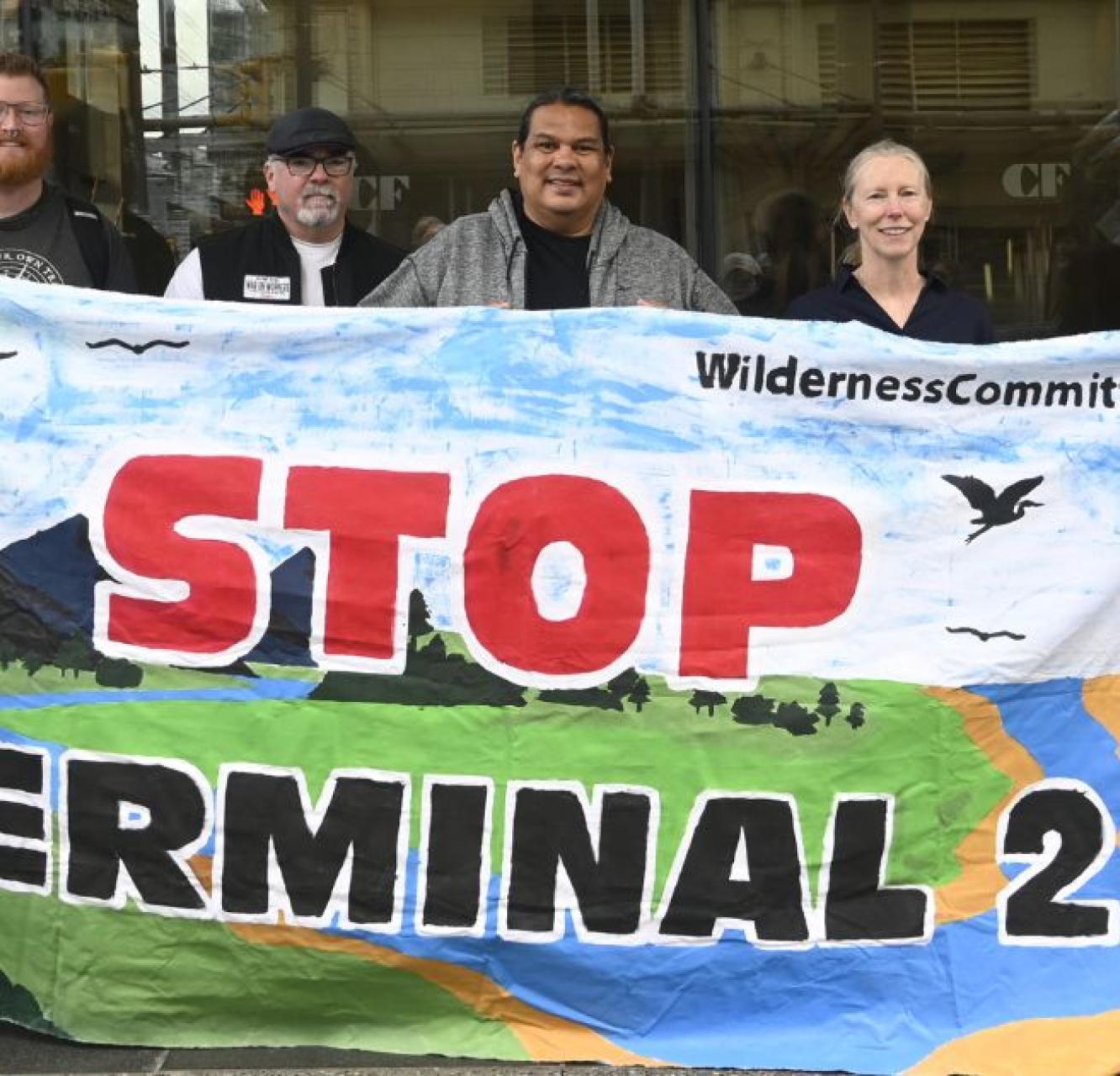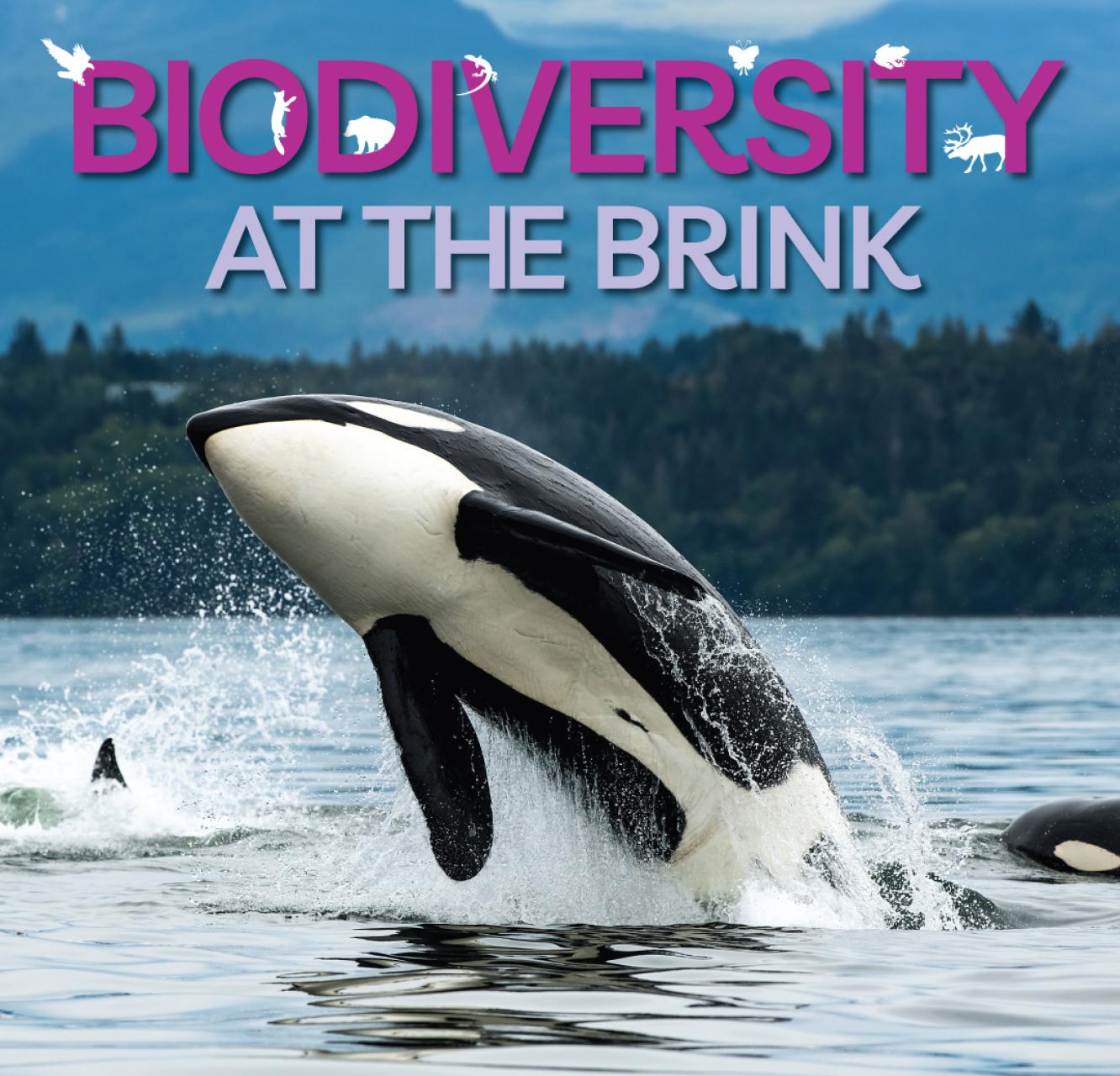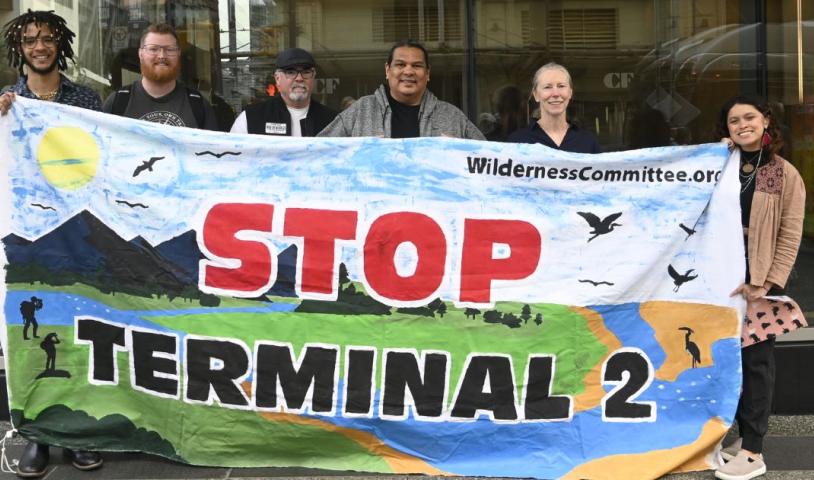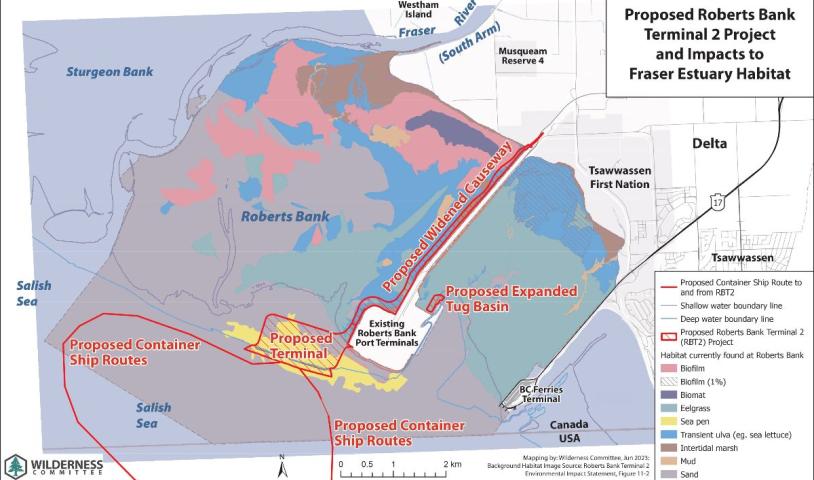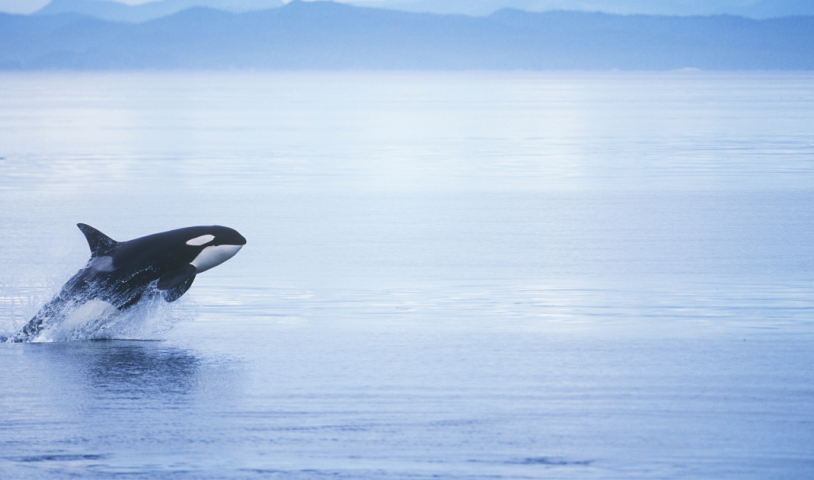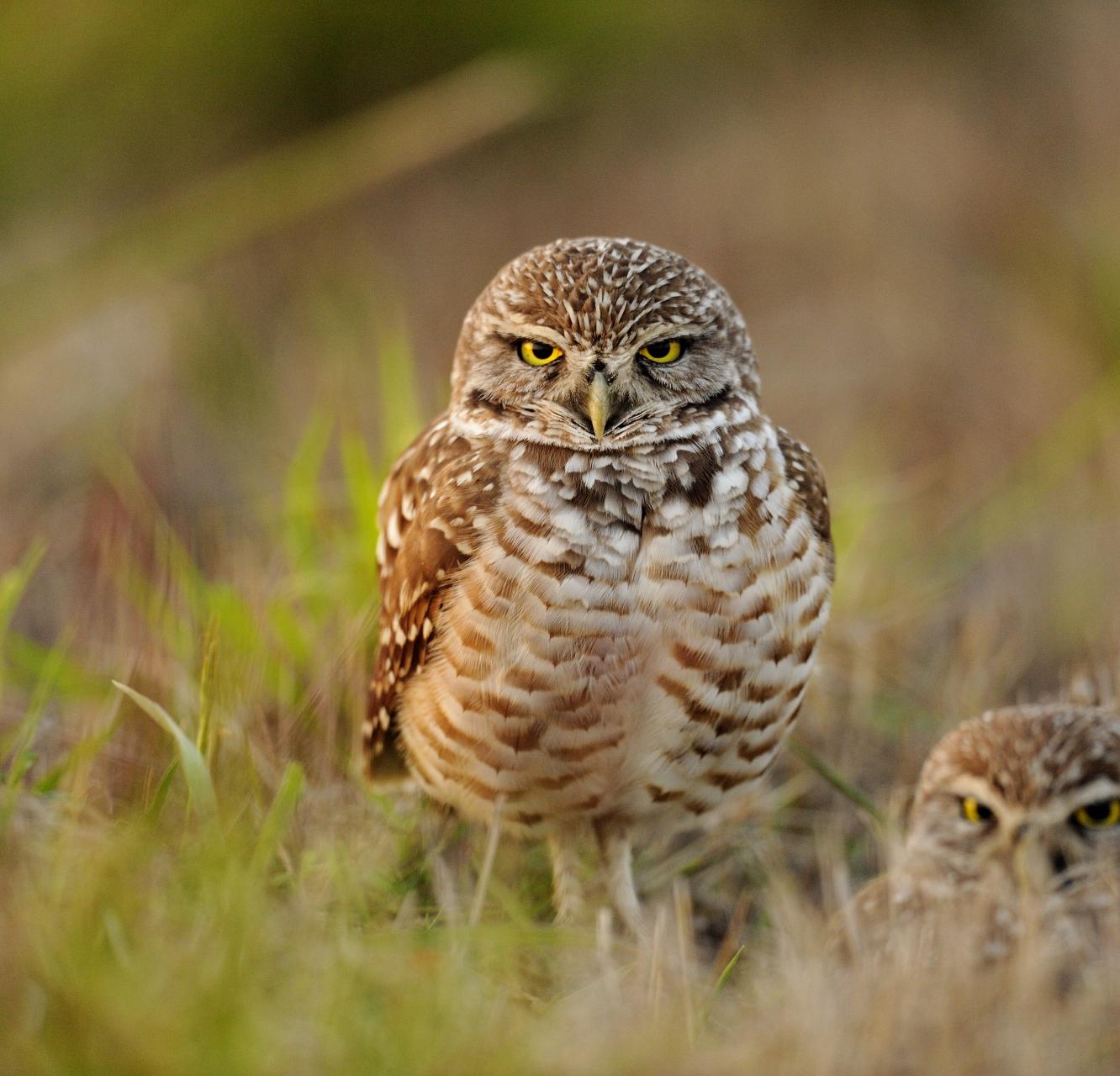Killer Whale
Protect the last 73
There are few experiences as awe-striking as hearing a sudden blow along the Salish Sea and turning just in time to see black fins and white saddle patches cresting the waves. Orcinus orca, more commonly known as a killer whale, is the only marine mammal found in every major ocean on Earth and holds a special place on the west coast of Canada. Here, three distinct populations of killer whales act as keystone species, helping maintain the delicate balance between saltwater and freshwater ecosystems. While all three populations are listed under the federal Species at Risk Act (SARA), the endangered southern resident killer whales face the most imminent risk of extinction and are the most endangered marine mammals in Canada. The population of southern residents is composed of three pods, or large family units, and today, a total of only 73 individuals remain.
Take Action
Stop Roberts Bank Terminal 2
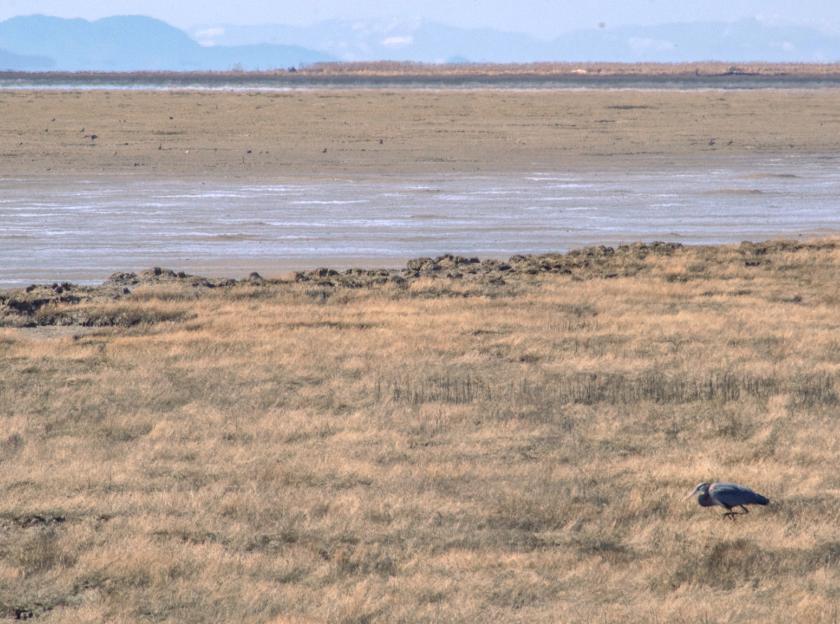
Home under threat
Since time immemorial, the Salish Sea has been home to more than 65 Tribes and First Nations who hold inherent rights and titles, representing the reciprocal relations they have with these lands, waters and the thousands of species they sustain. Southern resident killer whales are considered indicators of ecosystem health in this region and are an essential part of what makes these waters a teeming hotspot for biodiversity.
Listed as endangered under SARA in 2003, the survival of this genetically unique population depends on the protection of their critical habitat. Yet instead of the safeguards that federal law promises, this critical habitat has been subjected to relentless industrial pressure for as long, worsening these whales’ struggle for survival. Government-approved projects, such as the Trans Mountain oil pipeline and the Roberts Bank Terminal 2 expansion, are among the most devastating examples of sanctioned ecosystem destruction in their critical habitat. Safeguarding these waters is the key to ensuring killer whales thrive in the Pacific Northwest for generations to come.
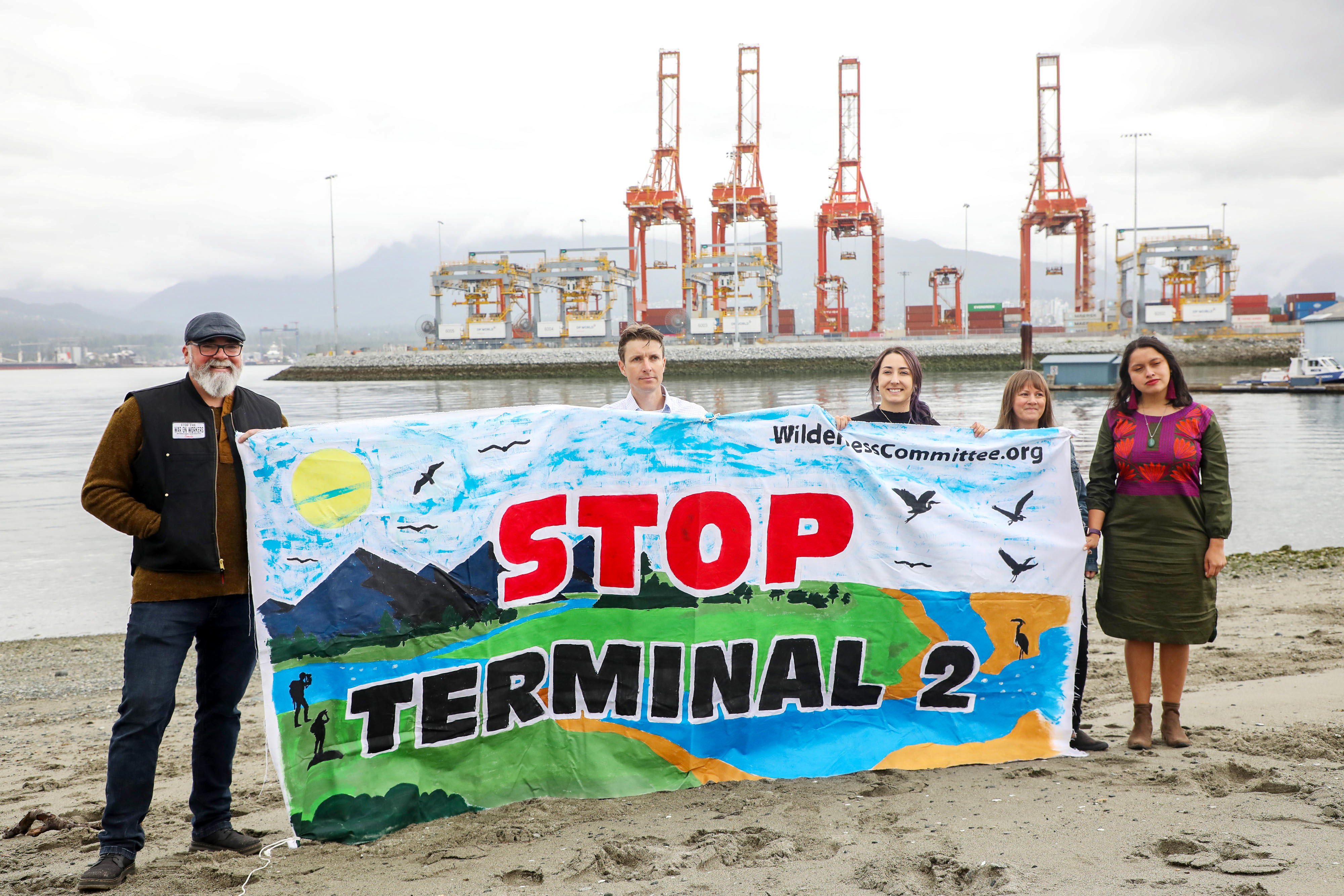
Triple threat to survival
In ecosystems, everything is connected. For southern resident killer whales, three interconnected threats have impeded their recovery.
Food scarcity: Chinook salmon, their main prey, are also endangered. Overfishing, destruction of salmon habitat, pollution and disease transmission from industrial fish farms have all put salmon stocks, and orcas, on the brink of extinction.
Toxic pollution: Industrialization around the Salish Sea has filled the waters and bodies of killer whales with persistent pollutants.
Noise and ship disturbance: Oil tankers, cruise ships and other large vessels flood the water with noise, interfering with basic survival behaviours like eating, mating and resting.
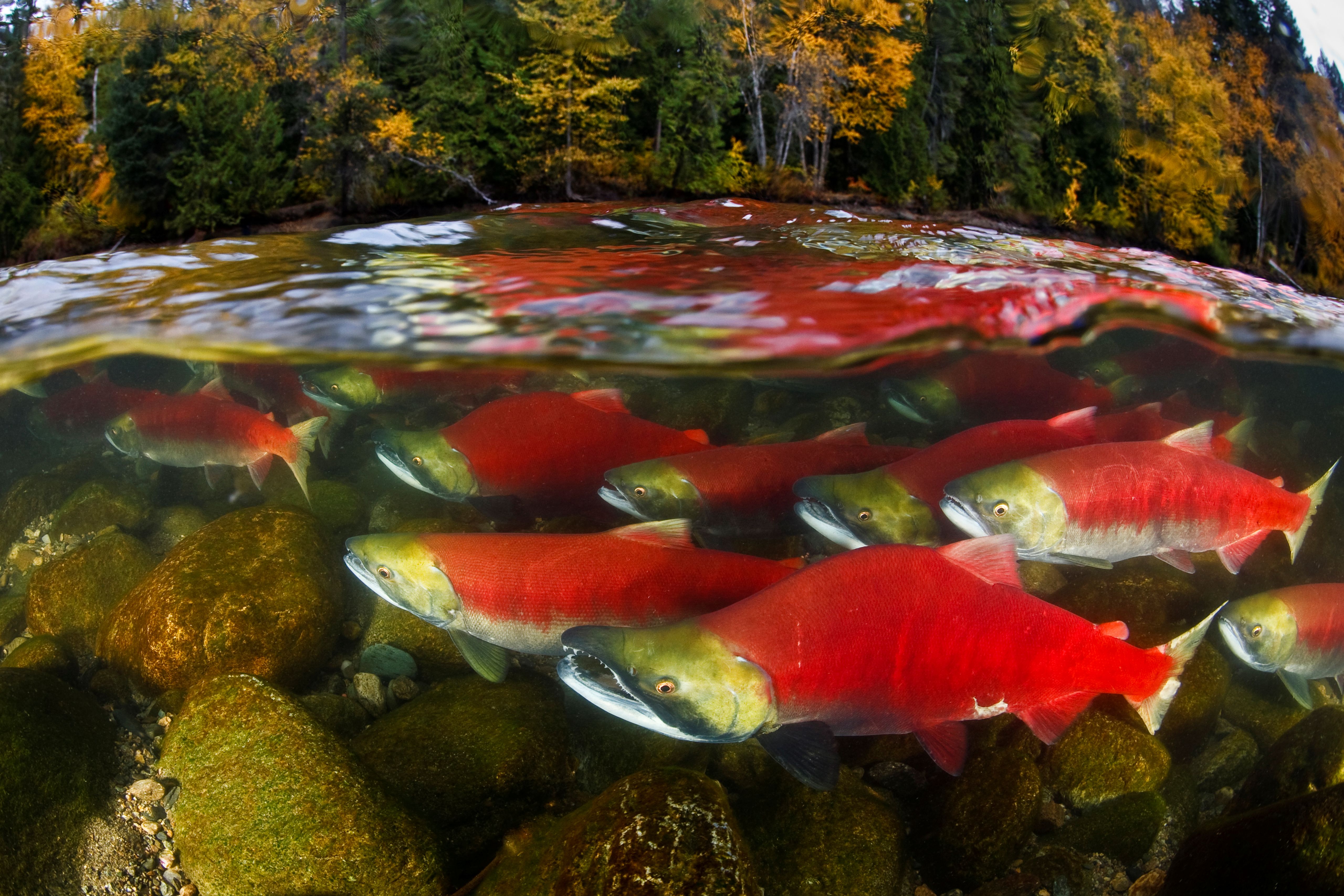
When laws are not enough
The plight of the southern residents is not unique. It reflects a broader failure of Canada’s approach to at-risk species protection. Policy gaps in SARA have continuously allowed critical habitat destruction to go unchecked, leaving the very species the law is meant to protect even more vulnerable than when they were listed.
One clear example is the approval of the Roberts Bank Terminal 2 expansion, a project that will destroy hundreds of hectares of the southern residents’ critical habitat. In 2024, the Wilderness Committee and our allies — represented by Ecojustice — went to court, arguing the project’s approval was unlawful under SARA because it put an endangered species at greater risk. In 2025, the court ruled against our case and deemed the approval lawful under the act. The decision proved, once again, that SARA is only as strong as the political will behind it. And that policy loopholes continue to get in the way of real habitat and species protection.
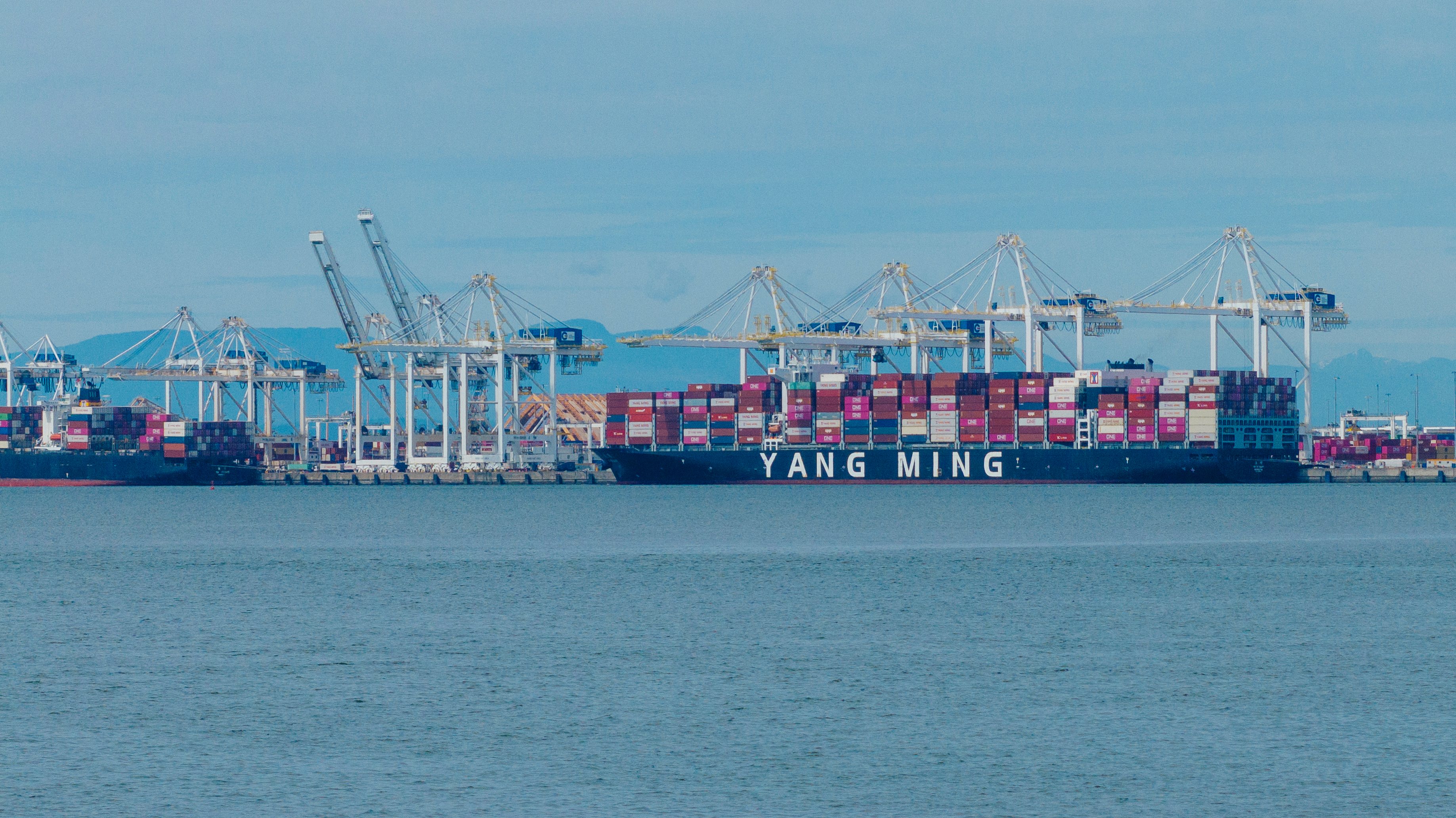
More orcas, less oil
Oil expansion projects on the west coast of Canada aren’t just bad for the climate; they’re devastating for marine ecosystems and endangered southern resident killer whales. The Trans Mountain Pipeline (TMX) was approved in 2016, despite it cutting through their critical habitat and putting their survival at even greater risk. TMX exacerbates the threats southern residents face by increasing oil tanker traffic in the area sevenfold, raising the chances of ship collisions and catastrophic oil spills. More tankers also create a lot more underwater noise, making it harder for killer whales to hunt, rest and communicate — basic behaviors their survival depends on.
Further industrial development along the Fraser River, like the proposed expansion of the Tilbury LNG facility, also poses a threat. Increased tanker traffic on this river, which is an important habitat for salmon and other species that the southern residents feed on, further threatens their ability to survive and thrive.
Southern resident killer whale critical habitat and Industrial Impacts Map
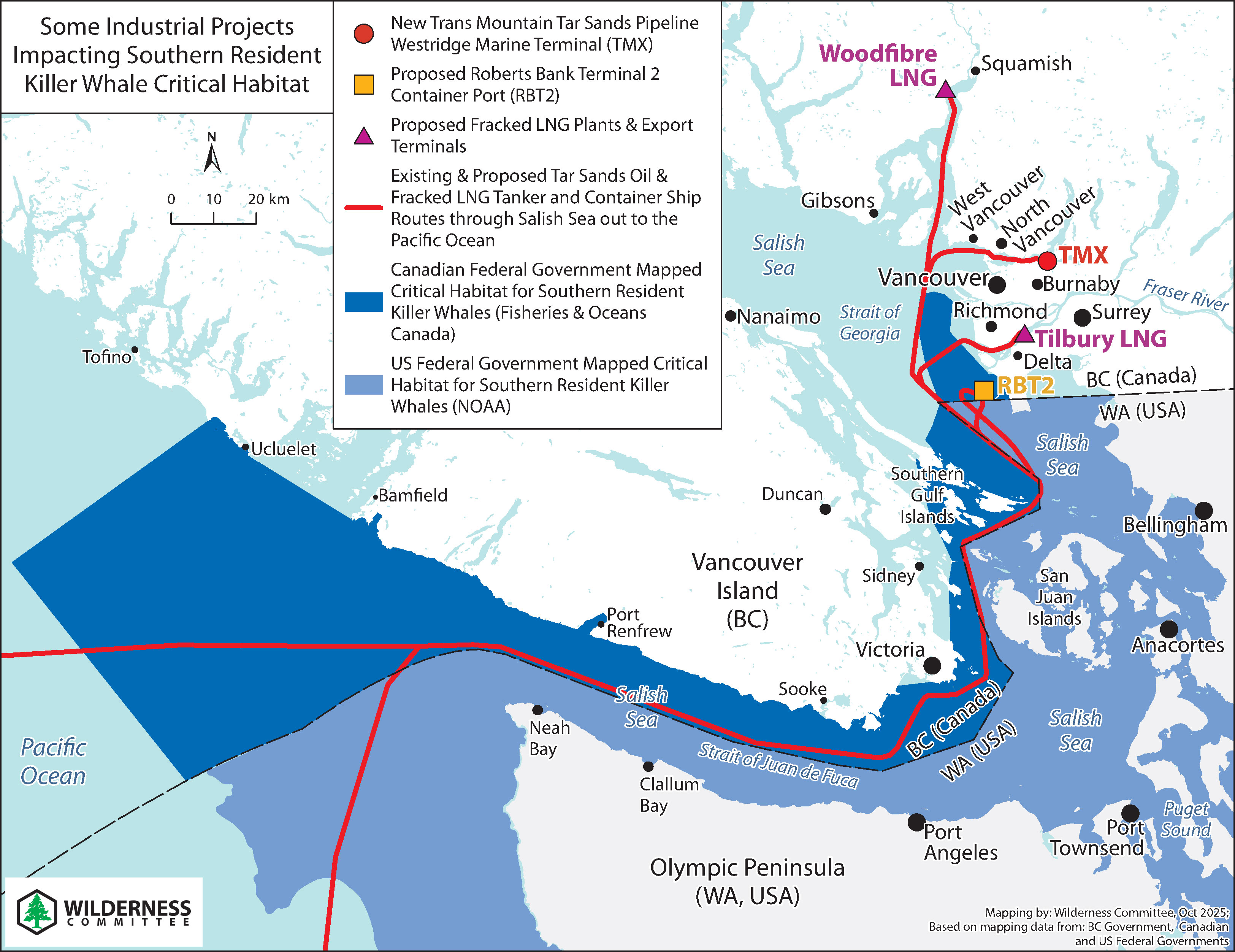
Protecting habitat is the only path to recovery
The status of southern resident killer whales reflects decades of Canada’s wrongdoings and habitat destruction. This needs to stop to give way to an era of care, protection and stewardship. Mitigation and band-aid restoration measures may slow extinction, but only strong protections that put critical habitat off limits can stop it. The best way to do that is to ensure that Canada’s Species at Risk Act is properly applied. Over the past several years, the Wilderness Committee and our allies have won several important legal victories and ensured SARA was able to protect species across the country more effectively. Yet, the relentless pace of industrial development in and around the Salish Sea is a stark reminder that much more must be done to safeguard these whales for good.
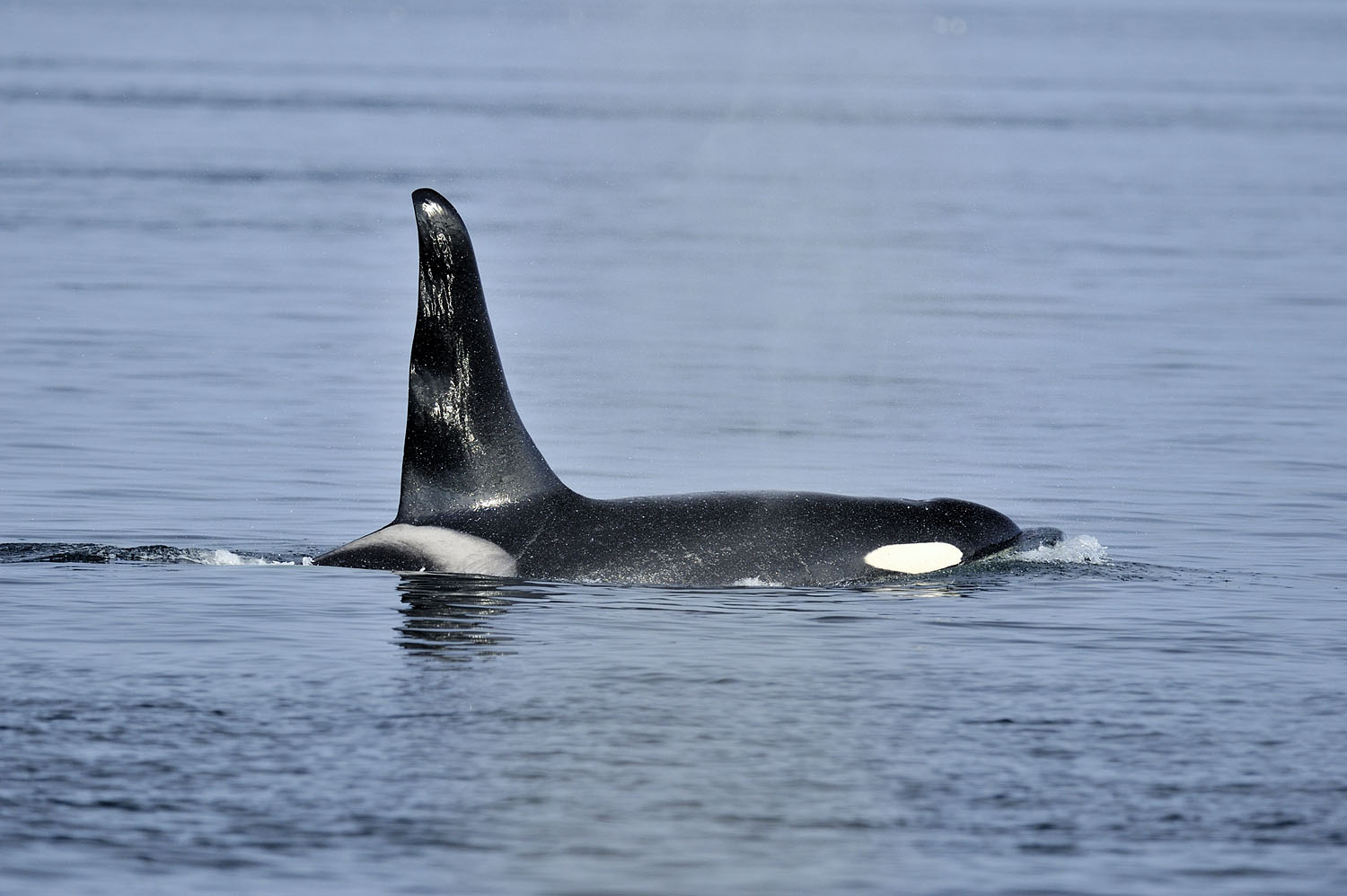
Biodiversity At The Brink
Globally, more than a million species are on the brink of extinction. They’re disappearing at a rate the Earth hasn’t seen in more than 10 million years. Laws in Canada are pushing them through the cracks. It’s time we raise our voices and remind governments to keep their promises to halt biodiversity loss and protect 30 per cent of lands and waters by 2030.
Campaign Gallery
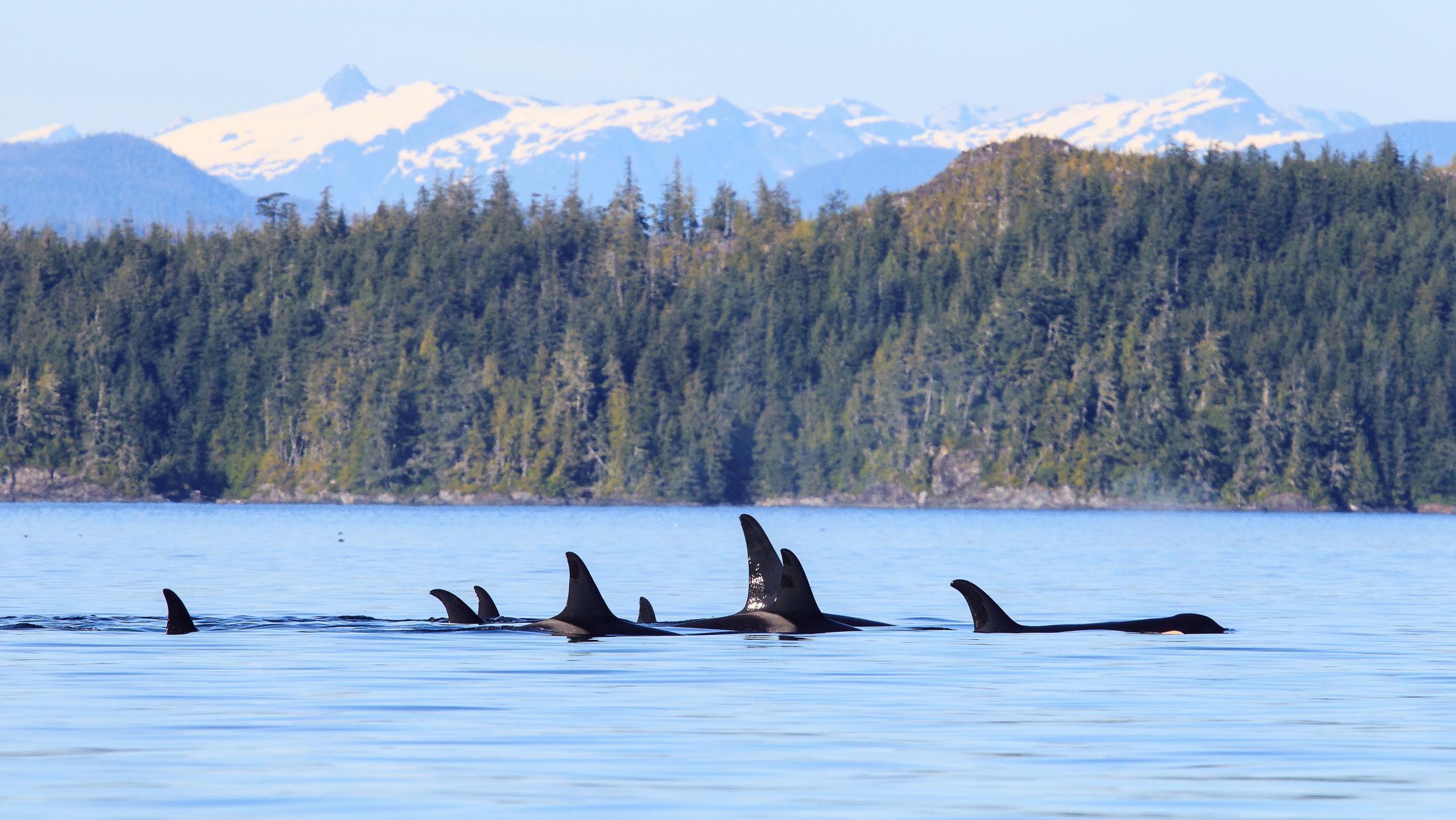
Check Out More Updates
Join Us
Don’t miss your chance to make a difference. Receive campaign updates and important actions you can take to protect wildlife, preserve wilderness and fight climate change.

